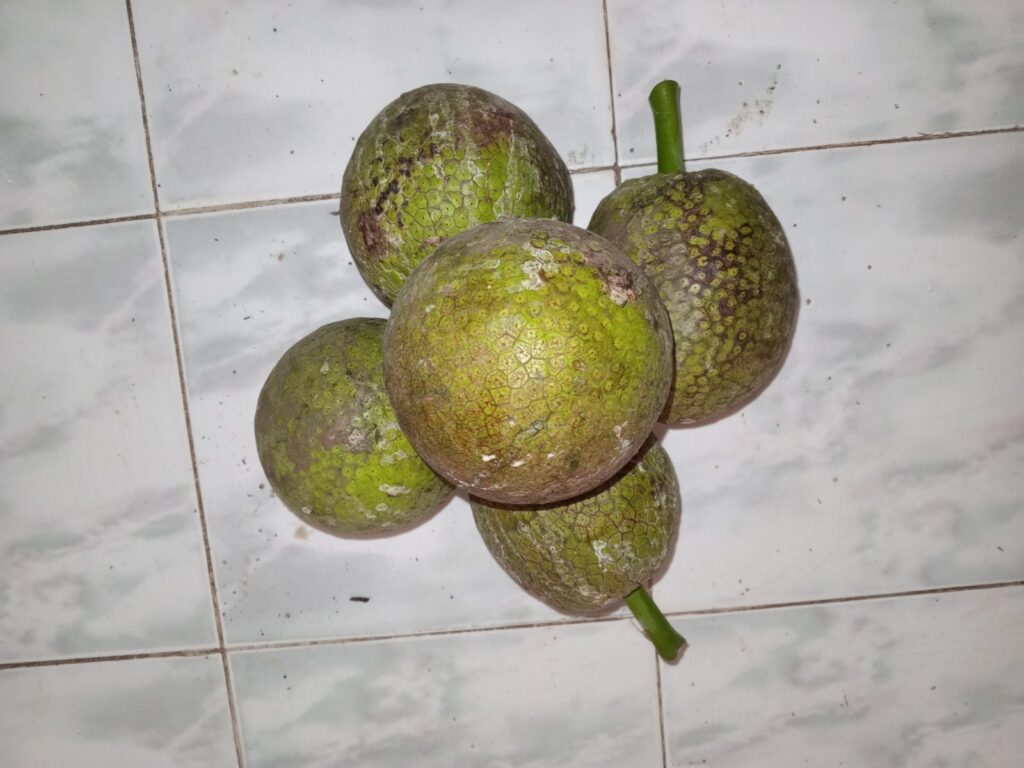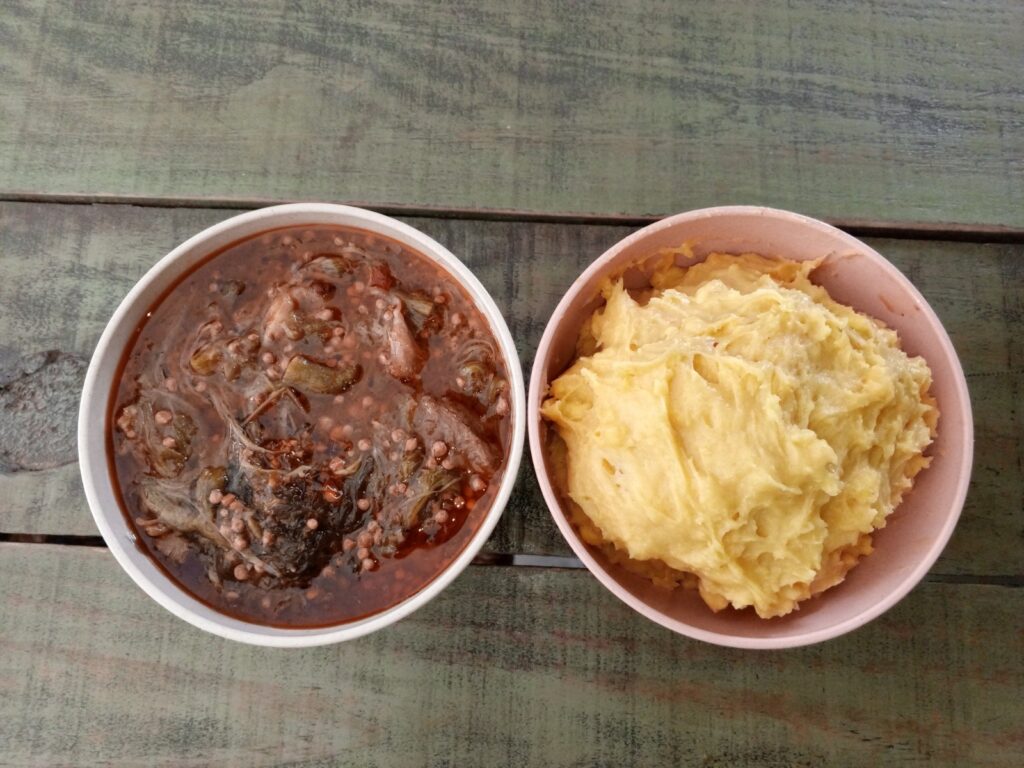TomTom is a beloved cultural dish made from breadfruit, rooted in Haitian tradition, particularly in the town of Jérémie in the south of the country. While breadfruit can be prepared in various ways—boiled, fried, or even turned into juice—TomTom is different for its texture and the way it’s consumed.
TomTom is not eaten like other foods; it has its own special preparation and method of enjoyment. Breadfruit grows on large trees across the island, and those with the skills and tools can either harvest it themselves or buy it at local markets to make this special dish. The key to making good TomTom is selecting the right breadfruit, locally known as “polo.” Once harvested, the breadfruit is peeled, cut, and boiled until tender.

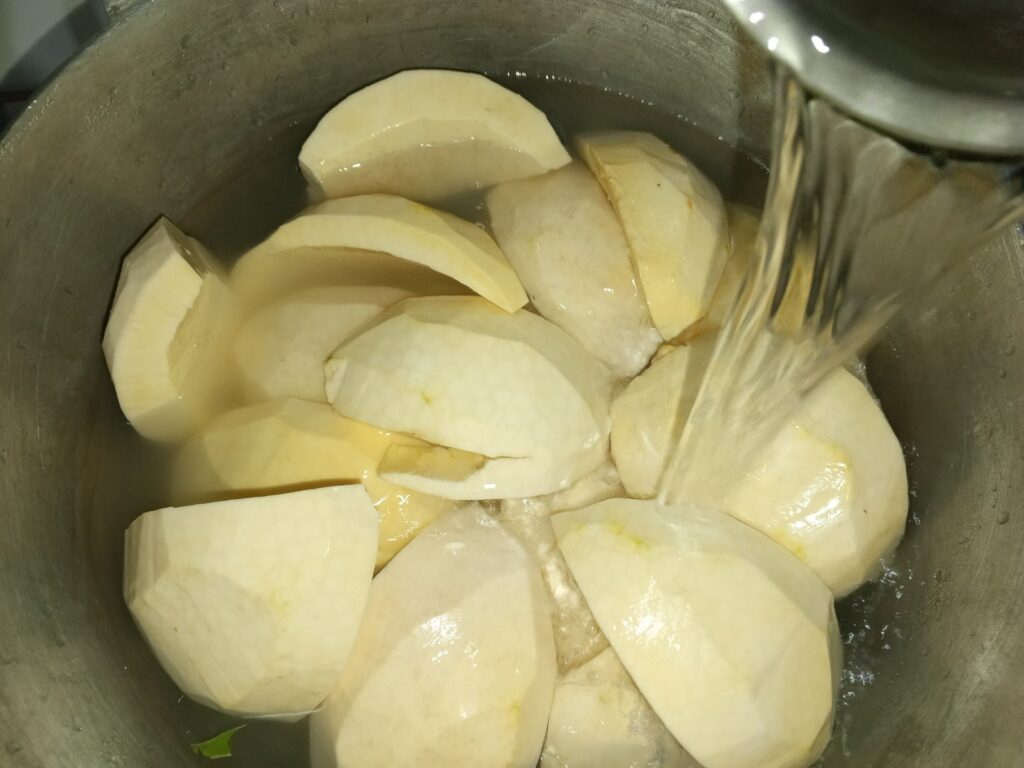

Once the breadfruit is well-cooked, it’s removed from the heat and allowed to cool slightly. But you can’t let it cool too much—it needs to stay warm for the next step: smashing (pounding). Traditionally, a pestle is used to pound the boiled breadfruit into a smooth, almost dough-like consistency. If you don’t have a pestle, any large container and a strong pestle handle will do. The breadfruit is pounded, with frequent dips of the pestle into water to prevent sticking, until it becomes soft and pliable.
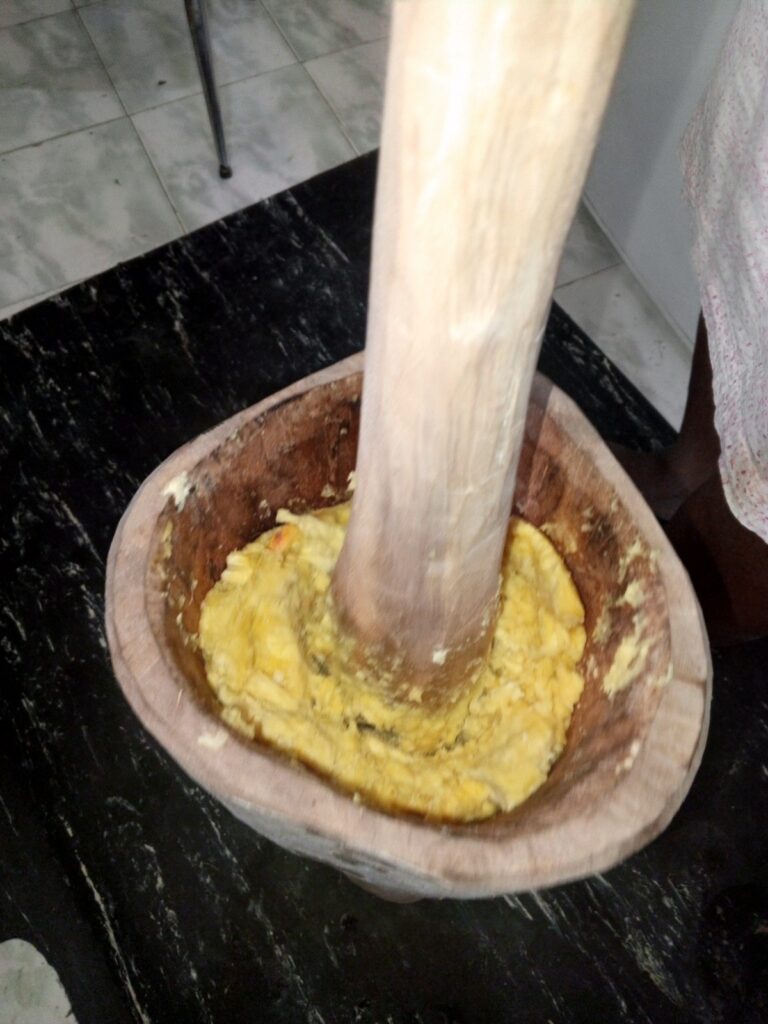
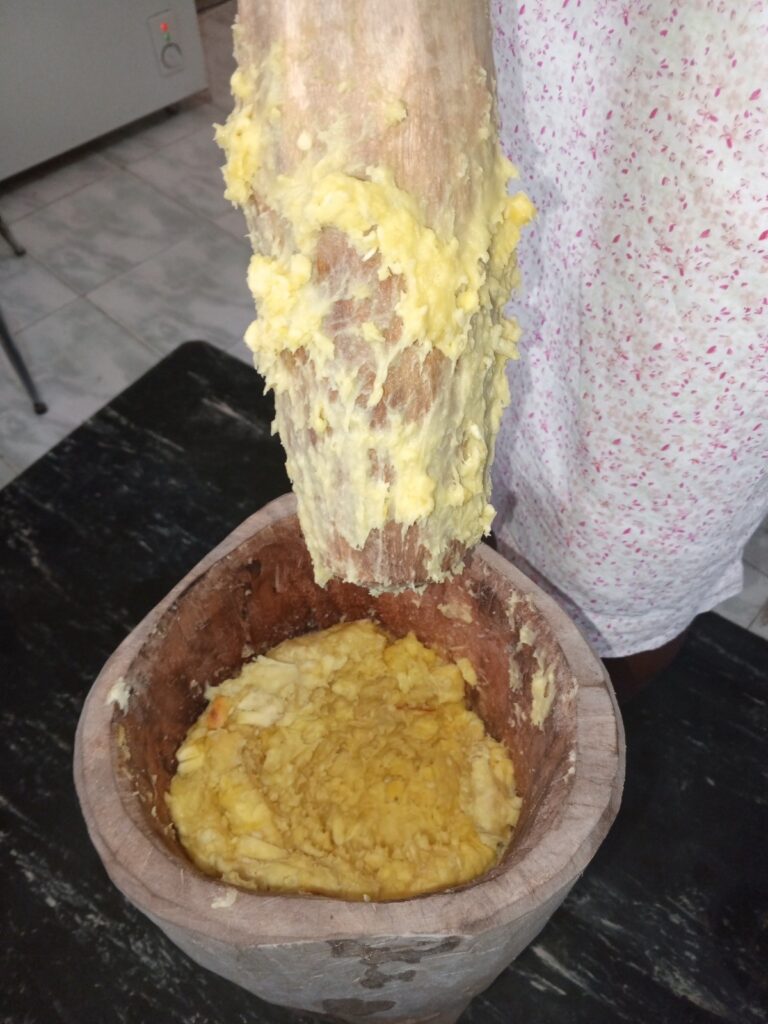
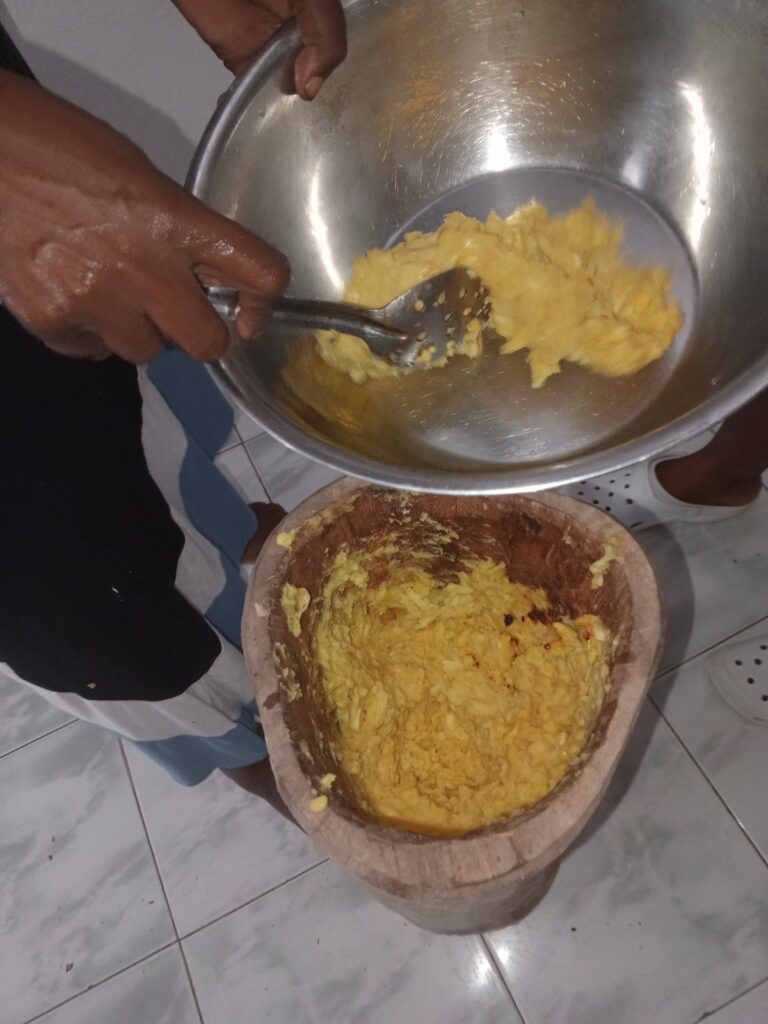
The real magic of TomTom comes with the sauce. While the breadfruit is boiling or being pounded, the sauce—typically a okra sauce with meat—is prepared. The key to the perfect TomTom sauce is making it very slippery (slimy). This is because TomTom isn’t chewed like most foods; instead, it’s dipped into the sauce and slipped down the throat, making the experience unique.
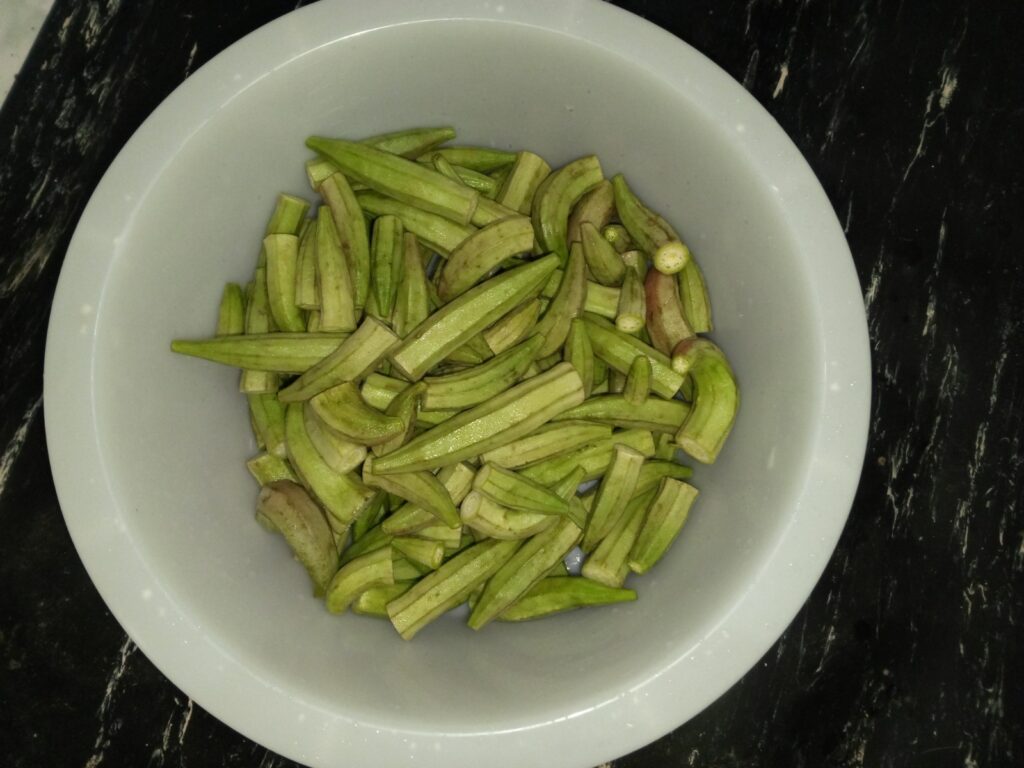
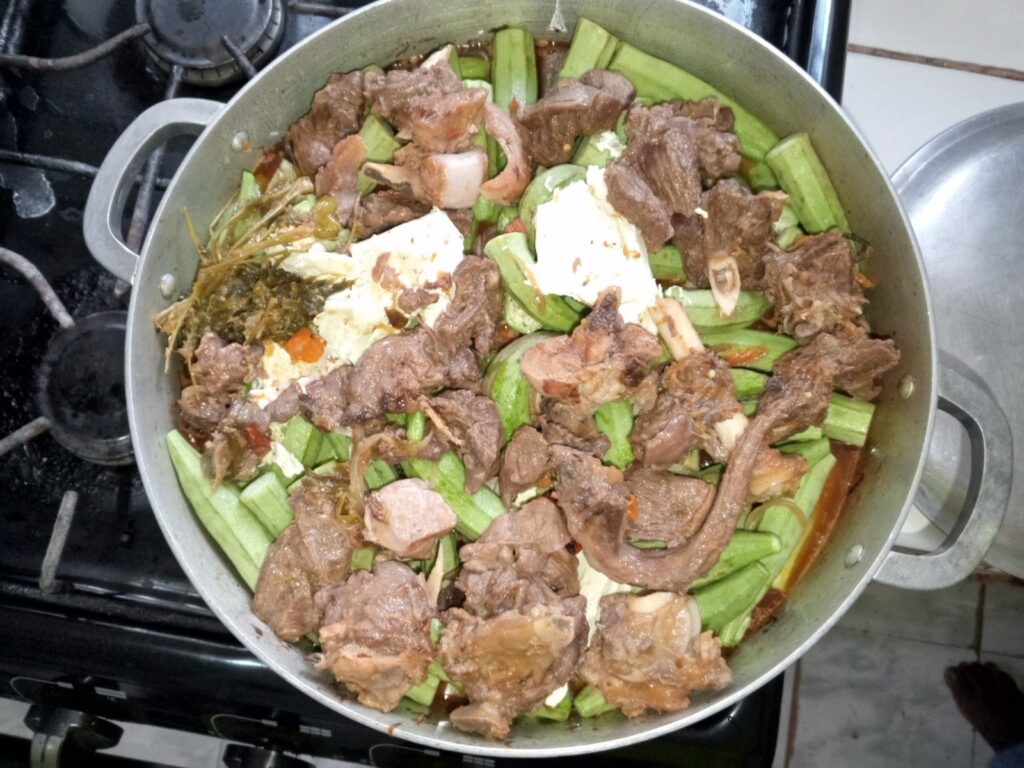
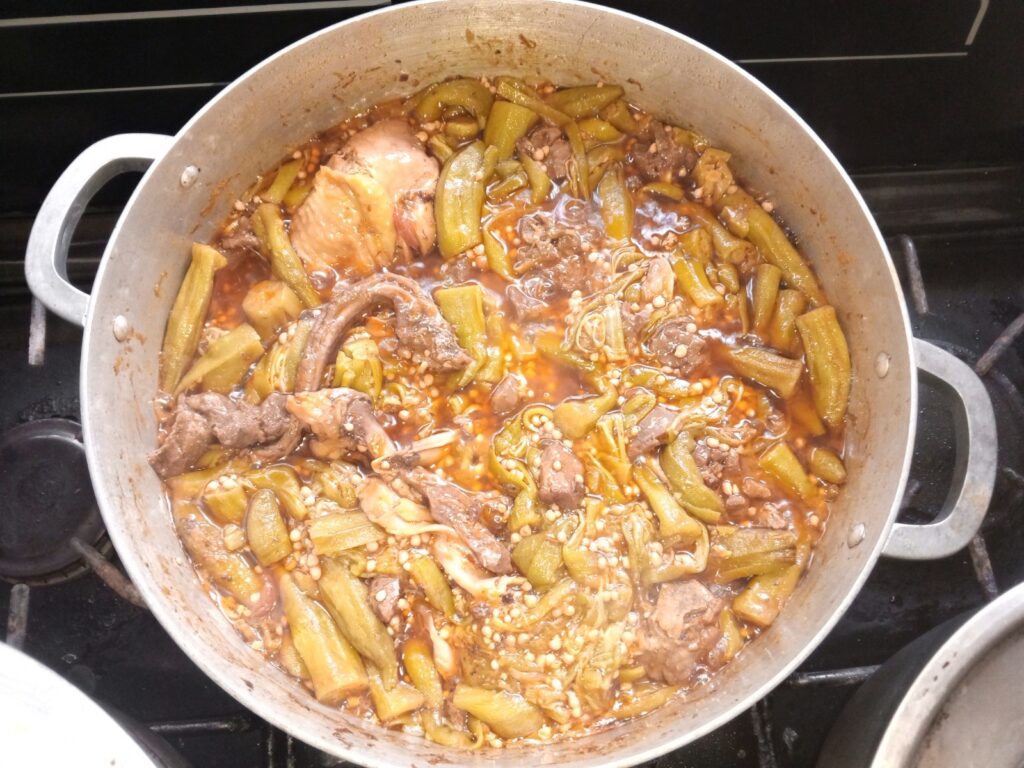
Once the sauce is ready and the breadfruit has been pounded, the TomTom is ready to serve. Each bite is dipped into the slippery okra sauce, and without chewing, it is swallowed, allowing it to slide down your throat.
TomTom is more than just a dish in Haiti—it’s a cultural tradition that brings families together for a time of cooking and sharing a meal together.


